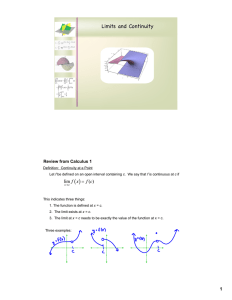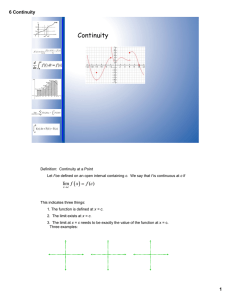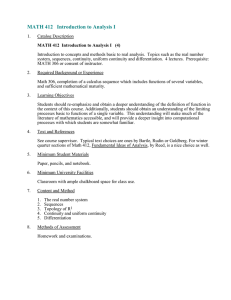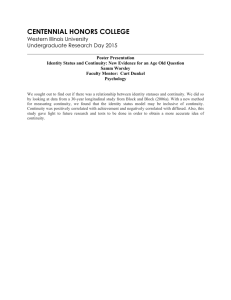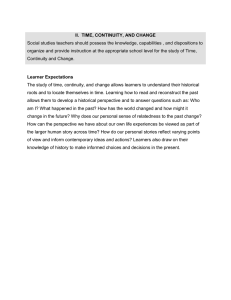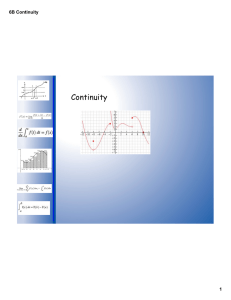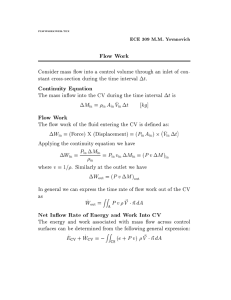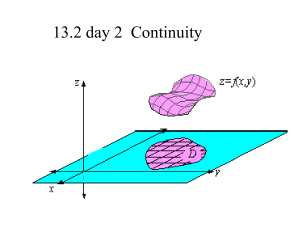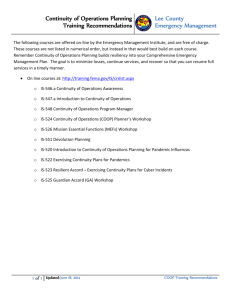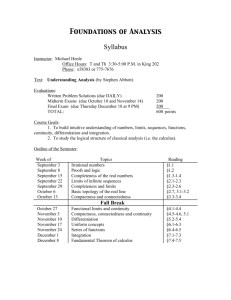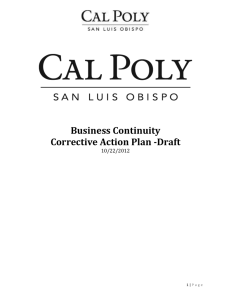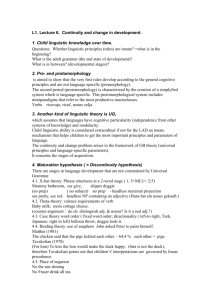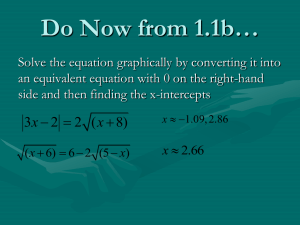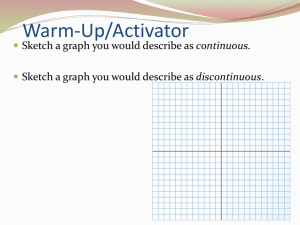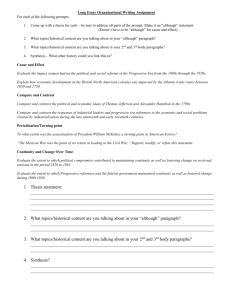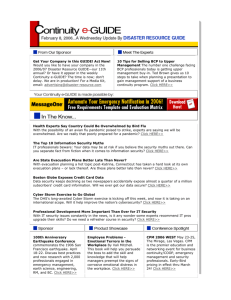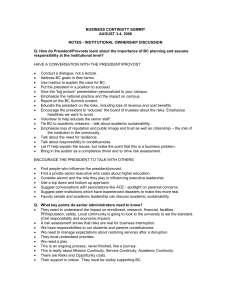Continuity Formal Approach
advertisement
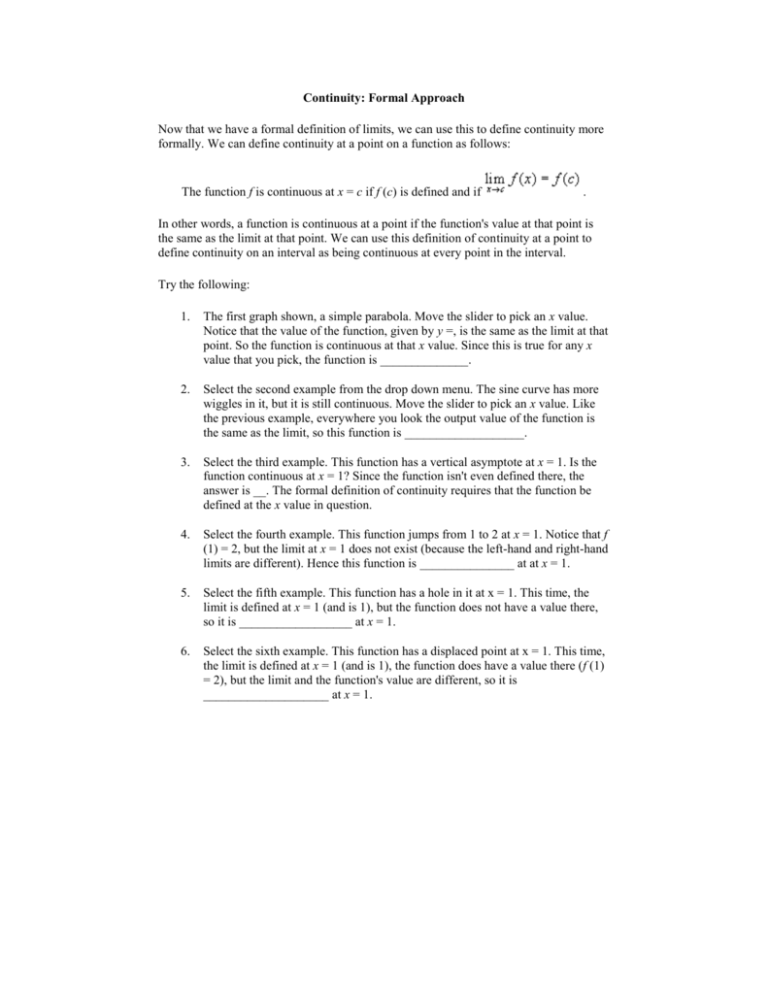
Continuity: Formal Approach Now that we have a formal definition of limits, we can use this to define continuity more formally. We can define continuity at a point on a function as follows: The function f is continuous at x = c if f (c) is defined and if . In other words, a function is continuous at a point if the function's value at that point is the same as the limit at that point. We can use this definition of continuity at a point to define continuity on an interval as being continuous at every point in the interval. Try the following: 1. The first graph shown, a simple parabola. Move the slider to pick an x value. Notice that the value of the function, given by y =, is the same as the limit at that point. So the function is continuous at that x value. Since this is true for any x value that you pick, the function is ______________. 2. Select the second example from the drop down menu. The sine curve has more wiggles in it, but it is still continuous. Move the slider to pick an x value. Like the previous example, everywhere you look the output value of the function is the same as the limit, so this function is ___________________. 3. Select the third example. This function has a vertical asymptote at x = 1. Is the function continuous at x = 1? Since the function isn't even defined there, the answer is __. The formal definition of continuity requires that the function be defined at the x value in question. 4. Select the fourth example. This function jumps from 1 to 2 at x = 1. Notice that f (1) = 2, but the limit at x = 1 does not exist (because the left-hand and right-hand limits are different). Hence this function is _______________ at at x = 1. 5. Select the fifth example. This function has a hole in it at x = 1. This time, the limit is defined at x = 1 (and is 1), but the function does not have a value there, so it is __________________ at x = 1. 6. Select the sixth example. This function has a displaced point at x = 1. This time, the limit is defined at x = 1 (and is 1), the function does have a value there (f (1) = 2), but the limit and the function's value are different, so it is ____________________ at x = 1.

